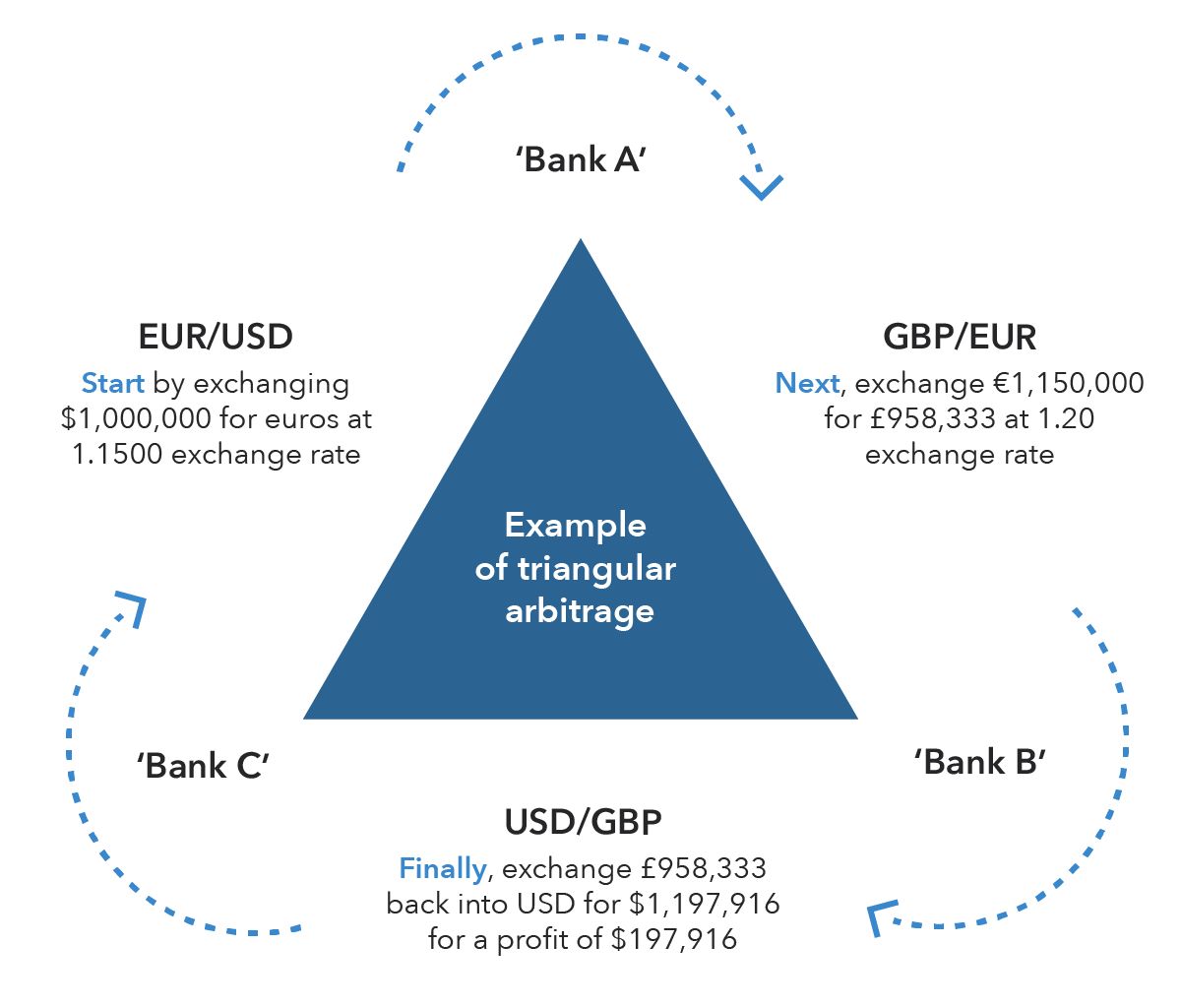Introduction
Fintech, short for financial technology, is revolutionizing various industries, and asset management is no exception. With the integration of advanced technologies, fintech is reshaping the way we handle investments, offering enhanced accessibility, improved data analysis, automated investing, and strengthened security measures. This article explores the impact of fintech on asset management, discussing the benefits it brings as well as the challenges and risks associated with its implementation.
In recent years, the financial industry has witnessed a rapid growth in fintech solutions, which leverage digital platforms, automation, and data analytics to streamline processes and provide innovative services. Traditional asset management, characterized by manual processes and high fees, is being disrupted by fintech, providing investors with new opportunities and convenience.
This article aims to delve into the advancements brought about by fintech, considering its effect on the accessibility, decision-making, costs, and security within the asset management space. Furthermore, it will examine the potential challenges and risks associated with the implementation of fintech, providing a comprehensive understanding of the evolving landscape.
By embracing fintech solutions, asset managers can leverage improved accessibility to reach a wider range of investors. The rise of digital platforms enables individuals from various financial backgrounds to access investment opportunities that were previously limited to institutional investors. This democratization of asset management allows for greater financial inclusion and empowers individuals to take control of their finances.
Moreover, fintech enhances data analytics capabilities, providing asset managers with valuable insights for decision-making. With the ability to gather and analyze vast amounts of data in real-time, asset managers can make more informed investment decisions, identify trends, and mitigate risks. This data-driven approach not only improves performance but also helps in creating personalized investment strategies tailored to an individual’s goals and risk tolerance.
Another significant impact of fintech is the emergence of automated investing and robo-advisors. These digital platforms utilize algorithms and artificial intelligence to provide automated investment advice and portfolio management services. By eliminating the need for extensive manual analysis, robo-advisors enhance efficiency, reduce costs, and offer users a seamless digital experience.
The adoption of fintech in asset management also leads to lower costs and fees. Traditional asset management often involves high fees, which can eat into an investor’s returns. Fintech disrupts this model by employing digital platforms that operate at a lower cost than traditional asset management firms. These cost savings are then passed onto investors in the form of reduced fees, making investing more affordable and accessible for all.
Finally, the implementation of fintech brings enhanced security measures and fraud prevention techniques. With the use of technologies such as blockchain and biometrics, asset managers can ensure the integrity of transactions, protect client data, and prevent fraudulent activities. This increased security instills trust in investors, further bolstering the adoption and acceptance of fintech solutions.
What is Fintech?
Fintech, a portmanteau of “financial technology,” refers to the innovative use of technology to deliver financial services and reshape traditional financial processes. It encompasses a broad range of technologies, including mobile apps, artificial intelligence, blockchain, data analytics, and more, to enhance the efficiency, accessibility, and effectiveness of financial services.
Fintech has emerged as a disruptive force in the financial industry, challenging traditional financial institutions and introducing new ways of managing finances, making payments, investing, and accessing financial products and services.
One of the primary goals of fintech is to provide a seamless and user-friendly experience for individuals and businesses, simplifying complex financial processes and eliminating barriers that have traditionally hindered access to financial services.
Mobile banking apps are an excellent example of fintech innovation. These apps allow users to perform various financial transactions, such as checking account balances, transferring funds, paying bills, and even applying for loans, from the comfort of their smartphones. This convenience and accessibility have revolutionized the way people manage their finances.
Moreover, fintech has paved the way for the development of alternative payment methods. Digital wallets, contactless payments, and peer-to-peer payment platforms have gained popularity, offering users quick, secure, and convenient ways to make transactions without the need for physical cash or traditional banking methods. This has reshaped the landscape of retail and e-commerce transactions.
Fintech has also brought significant changes to the investment landscape. Traditional asset management, with its high fees and complexity, has given way to robo-advisors and automated investing platforms. These innovative solutions utilize algorithms and artificial intelligence to provide personalized investment advice, portfolio management, and even execute trades without human intervention. As a result, individuals can access professional investment guidance and build diversified portfolios at a fraction of the cost.
Furthermore, fintech has enabled the rise of crowdfunding and peer-to-peer lending platforms, which connect borrowers directly with lenders through online marketplaces. This disintermediation eliminates the need for traditional financial institutions, providing individuals and businesses with alternative sources of funding and investment opportunities.
The potential of fintech goes beyond individual financial management; it has the power to address financial inclusion and impact underserved populations. Fintech solutions allow people in underserved areas, who may not have access to traditional banking services, to manage their finances, make payments, and access credit and insurance products through their smartphones. This can promote economic growth and empower individuals by expanding financial access and opportunities.
Overall, fintech has revolutionized the financial industry, transforming the way we manage money, make payments, invest, and access financial services. It continues to drive innovation, improve efficiency, and enhance financial inclusion, shaping the future of the financial services landscape.
The Impact of Fintech on Asset Management
Fintech has had a profound impact on the world of asset management, transforming the way investments are managed, accessed, and analyzed. From improved accessibility and enhanced data analytics to automated investing and lower costs, fintech has revolutionized the asset management industry.
One of the key ways fintech has transformed asset management is through improved accessibility and convenience. Traditional asset management services were typically reserved for high-net-worth individuals and institutional investors. However, fintech solutions have democratized access to investment opportunities, allowing individuals from diverse financial backgrounds to invest and manage their assets easily. With the help of digital platforms and mobile apps, investors can now research, monitor, and make investment decisions at their fingertips, breaking down barriers and empowering a wider range of individuals to participate in the markets.
Additionally, fintech has brought about enhanced data analytics and decision-making capabilities in asset management. The integration of advanced technologies, such as artificial intelligence and machine learning, enables asset managers to gather vast amounts of data, analyze market trends, and make data-driven investment decisions. This data-driven approach allows for more accurate risk assessment, portfolio optimization, and the ability to identify investment opportunities that were previously overlooked. With real-time data at their disposal, asset managers can make proactive and informed decisions, maximizing returns and minimizing risks for their clients.
Automated investing and robo-advisors are another significant impact of fintech on asset management. Robo-advisors leverage algorithms and machine learning to provide automated investment advice and portfolio management. By integrating risk profiling, goal-based investing, and algorithmic asset allocation, these digital platforms offer personalized investment solutions to individuals at a fraction of the cost of traditional human advisors. Robo-advisors have made investing accessible to a wider audience and have streamlined the investment process, eliminating the need for extensive paperwork and lengthy onboarding procedures.
Furthermore, fintech has contributed to lower costs and fees in the asset management industry. Traditional asset management services often incurred high management fees, resulting in reduced returns for investors. Fintech disrupts this model by utilizing digital platforms that operate at significantly lower costs. With streamlined processes and reduced overheads, fintech-driven asset managers can offer their services at lower fees, making it more cost-effective for investors to access professional asset management services. This cost reduction has broadened access to sophisticated investment strategies and diversified portfolios, benefiting both individual investors and small to medium-sized enterprises.
Fintech has also significantly increased the security and fraud prevention measures in asset management. With the integration of technologies like blockchain and biometrics, asset managers can ensure the integrity of transactions, protect sensitive client data, and safeguard against fraudulent activities. Blockchain technology, with its transparent and decentralized nature, enhances the security and immutability of financial transactions. Biometric authentication methods, such as fingerprint or facial recognition, provide an additional layer of security, mitigating the risk of unauthorized access or identity theft. These advancements in security technology instill trust in investors and enhance overall confidence in fintech-driven asset management solutions.
Overall, fintech has revolutionized asset management, bringing about improved accessibility, enhanced data analytics, automated investing, lower costs, and increased security measures. As technology continues to advance, we can expect even more innovative solutions and advancements in asset management, empowering investors and reshaping the industry for years to come.
Improved Accessibility and Convenience
One of the significant impacts of fintech on asset management is the improved accessibility and convenience it provides to investors. Traditionally, accessing professional asset management services was limited to high-net-worth individuals or institutional investors. However, fintech has democratized the investment landscape, making it accessible to individuals from diverse financial backgrounds.
Through digital platforms and mobile apps, investors now have easy access to investment opportunities and can manage their portfolios at their convenience. They can research investment options, monitor their holdings, and execute trades, all from the comfort of their own homes or on-the-go. This accessibility facilitates greater participation in the market and empowers individuals to take control of their financial futures.
Fintech solutions have also facilitated the simplification and streamlining of investment processes. Account opening and onboarding procedures that used to be time-consuming and complex have been simplified through digital platforms. Investors can now complete the necessary documentation online, eliminating the need for physical paperwork and reducing the time and effort required to start investing. This convenience has made it easier and more efficient for individuals to enter the world of asset management.
Moreover, fintech has introduced convenience through the integration of multiple financial services into one platform. Investors can not only manage their investments but also access banking services, make payments, and track their overall financial health from a single digital interface. This consolidation of services eliminates the need to switch between multiple applications, providing a seamless and integrated user experience.
Besides individual investors, fintech has also expanded access to investment opportunities for small and medium-sized enterprises (SMEs). These businesses often faced challenges in accessing capital and sophisticated asset management services. However, fintech-driven platforms have made it easier for SMEs to access financing options, such as crowdfunding, peer-to-peer lending, or even specialized investment vehicles targeting SMEs. This increased accessibility to capital and investment opportunities can fuel the growth and development of these businesses, contributing to economic expansion.
Another aspect of improved accessibility is the availability of financial education and tools provided by fintech platforms. Many fintech solutions offer educational content, calculators, and investment simulators to help investors gain knowledge and make informed decisions. These resources empower individuals with the necessary information to understand the intricacies of investing and build their financial literacy, ultimately enabling them to make better investment choices.
In summary, fintech has improved accessibility and convenience in asset management by providing easy access to investment opportunities, streamlining investment processes, offering consolidated financial services, expanding access for SMEs, and providing educational resources. These advancements have made investing more accessible and convenient for individuals, fostering financial inclusion and enabling more individuals to participate and benefit from the opportunities offered by the asset management industry.
Enhanced Data Analytics and Decision-making
Fintech has brought significant advancements in data analytics and decision-making capabilities within asset management. The integration of innovative technologies, such as artificial intelligence and machine learning, has revolutionized the way data is collected, analyzed, and utilized to inform investment decisions.
One of the key benefits of fintech in asset management is the ability to gather and process vast amounts of data in real-time. Traditional manual processes often involved time-consuming data collection and analysis. However, with fintech solutions, asset managers can access a wealth of data from various sources, including market trends, economic indicators, corporate financial reports, and even social media sentiment. This abundance of data enables asset managers to gain valuable insights into market dynamics and make more informed and timely investment decisions.
The use of advanced analytics tools, powered by artificial intelligence and machine learning algorithms, allows for sophisticated data analysis, identifying patterns, trends, and correlations that may not be apparent to human analysts. By processing large data sets quickly and accurately, fintech-driven asset management platforms can extract relevant information and uncover hidden opportunities or risks, enhancing the decision-making process.
Fintech has also facilitated the development of predictive analytics models in asset management. By analyzing historical data and utilizing algorithms, asset managers can generate forecasts and predictions about market movements, asset performance, and potential risks. These predictive models enable proactive decision-making, where asset managers can take preemptive actions to mitigate risks or make strategic investment decisions based on anticipated market trends.
Moreover, fintech-driven asset management platforms offer tools for portfolio optimization and risk assessment. With the help of advanced analytics, asset managers can customize and optimize investment portfolios based on specific goals, risk tolerance, and investment preferences. They can analyze the performance and correlation of different asset classes, diversify holdings, and rebalance portfolios, all with the aim of maximizing returns and minimizing risks for clients.
Fintech also enables personalized investment strategies tailored to individual investors. By collecting and analyzing data on an investor’s financial goals, risk appetite, and investment preferences, asset managers can create customized investment plans that align with the individual’s unique circumstances and objectives. This personalization fosters a more client-centric approach and enhances the overall investment experience.
Furthermore, fintech has introduced data visualization tools that make it easier for asset managers and investors to interpret and understand complex data. Through interactive charts, graphs, and dashboards, data can be presented in a visually appealing and user-friendly manner, allowing for better comprehension and informed decision-making. This data visualization enables asset managers to communicate investment strategies and performance to clients more effectively.
In summary, fintech has tremendously enhanced data analytics and decision-making capabilities in asset management. The utilization of advanced technologies, predictive analytics, portfolio optimization tools, and data visualization has revolutionized how asset managers gather and analyze data, make informed investment decisions, and create personalized strategies for clients. These advancements empower asset managers to leverage data-driven insights and provide more tailored and efficient solutions to investors.
Automated Investing and Robo-advisors
One of the significant impacts of fintech on asset management is the rise of automated investing and the emergence of robo-advisors. These innovative solutions utilize technology and algorithms to provide automated investment advice and portfolio management.
Robo-advisors have transformed the way individuals invest by leveraging artificial intelligence and machine learning. These digital platforms gather information about an investor’s financial goals, risk tolerance, and investment preferences through online questionnaires. With this data, robo-advisors generate personalized investment plans and asset allocations tailored to the individual’s needs.
Based on the investor’s profile and objectives, robo-advisors automatically select and manage a diversified portfolio of investments, making investment decisions on behalf of the client. The algorithms consider factors such as asset performance, market trends, and risk tolerance to determine the optimal mix of assets within the portfolio. These automated investment strategies provide a hands-off approach for investors, eliminating the need for active involvement in portfolio management.
Robo-advisors offer several advantages over traditional human advisors. Firstly, they provide accessibility to professional investment advice and asset management services to a broader audience, including individuals with lower levels of investable assets. The lower minimum investment requirements make it possible for small investors to access professionally managed portfolios that were previously reserved for high-net-worth individuals.
Additionally, robo-advisors offer cost-effective investment solutions. Traditional asset management services typically involve high management fees, which can eat into investor returns. Robo-advisors operate with lower costs, as they automate most of the investment process, reducing the need for expensive human advisors and extensive administrative support. The cost savings are then passed on to investors in the form of lower fees, making investing more affordable and attractive.
Another advantage of automated investing is the elimination of human biases. Human investors are prone to emotional decision-making and cognitive biases that can impact investment performance. Robo-advisors, on the other hand, base investment decisions solely on algorithms and objective data analysis, eliminating the influence of emotions and biases. This systematic approach helps reduce the potential for impulsive or irrational investment decisions, leading to more consistent and disciplined portfolio management.
Robo-advisors also offer a seamless digital user experience. Investors can access their portfolios, monitor performance, and make adjustments through user-friendly interfaces and mobile apps. This convenience allows for real-time portfolio tracking and the ability to make changes to investment strategies quickly and efficiently, without the need for time-consuming meetings or paperwork.
However, it’s essential to note that robo-advisors have their limitations. While they excel in providing efficient and cost-effective investment solutions, they may lack the personal touch and individualized advice that some investors may seek. Complex financial planning needs or unique investment situations may require the expertise and guidance of human financial advisors. Therefore, a hybrid approach that combines the benefits of robo-advisors and human advisors is becoming increasingly popular, providing a blend of personalized advice and algorithmic portfolio management.
In summary, automated investing and robo-advisors have transformed the asset management industry by offering accessibility to professional investment services, lower costs, unbiased decision-making, and a seamless digital user experience. While human advisors still play a crucial role in certain situations, robo-advisors have become an attractive option for investors looking for a convenient, cost-effective, and automated approach to managing their investments.
Lower Costs and Fees
One of the significant benefits brought about by fintech in asset management is the opportunity for lower costs and fees. Traditional asset management services have often been associated with high fees, which can significantly impact investor returns. However, the integration of technology and automation through fintech solutions has disrupted this traditional fee structure, making investing more affordable and accessible for all.
Fintech-driven asset management platforms operate with significantly lower costs compared to traditional asset management firms. By leveraging digital platforms, automation, and streamlined processes, fintech solutions eliminate many of the overhead expenses associated with traditional asset management services. The reduced costs allow fintech-driven asset managers to offer their services at a fraction of the price, making it more cost-effective for investors to access professional investment management.
Lower costs benefit investors in several ways. Firstly, reduced fees mean that a larger portion of an investor’s returns remains in their pocket. With lower management fees, investors can potentially earn higher net returns on their investments, allowing their wealth to grow more efficiently over time.
Moreover, lower costs open up investment opportunities to a wider range of individuals. Historically, high fees associated with professional asset management services limited access to wealthier clients and institutional investors. However, with the advent of fintech solutions, individuals with smaller investment amounts can now access professionally managed portfolios at a fraction of the cost. This democratization of asset management provides opportunities for more individuals to benefit from the expertise and resources typically available to high-net-worth individuals.
Fintech-driven asset management platforms also enable investors to have more control over their investment expenses. Traditional asset management fees are often fixed and based on a percentage of assets under management, regardless of the level of activity or performance. On the other hand, fintech solutions may offer flexible fee structures, allowing investors to choose options that align with their specific investment strategies and goals. This customizable fee structure provides transparency and choice, empowering investors to optimize their investment expenses based on their individual circumstances.
In addition to lower asset management fees, fintech solutions have also contributed to the reduction of other associated costs. For example, automated investment platforms and robo-advisors often operate with lower transaction fees, as they utilize technology to automate and streamline the investment process. These lower transaction costs translate into cost savings for investors, especially for those who frequently buy and sell investments.
It’s worth noting that while the lower costs associated with fintech-driven asset management are advantageous for investors, investors should still carefully consider the overall value offered by the solution. The fees charged by asset managers should be evaluated in conjunction with other factors, such as the quality of investment advice, performance track record, level of personalized service, and the alignment of investment strategies with individual goals and risk tolerance.
In summary, fintech has brought about lower costs and fees in asset management through the use of digital platforms, automation, and streamlined processes. These lower costs benefit investors by allowing them to retain a larger portion of their returns, increasing accessibility to professional investment management services, and providing greater control over investment expenses. As the fintech industry continues to evolve, investors can expect further cost reductions and fee innovations that enhance accessibility and affordability.
Increased Security and Fraud Prevention
Fintech has significantly enhanced security measures and fraud prevention in the asset management industry. With the integration of advanced technologies, such as blockchain and biometrics, fintech solutions provide increased security for investors’ assets and personal information.
One of the key technologies that have revolutionized security in asset management is blockchain. Blockchain is a decentralized and transparent digital ledger that records and verifies transactions across multiple computers. This technology ensures the integrity and immutability of financial transactions, making it highly secure and resistant to tampering or fraud. By leveraging blockchain technology, asset managers can provide investors with secure and transparent transaction records, ensuring the authenticity and accuracy of investment activities.
Moreover, blockchain enables improved custody of assets. Traditional asset custody often involved multiple intermediaries, which could introduce vulnerabilities and increase the risk of fraud or unauthorized access. However, with blockchain, asset managers can leverage smart contracts to establish a secure and automated custody process. Smart contracts are self-executing contracts with predefined rules encoded within the blockchain, ensuring that assets are held securely and releasing them only when specific conditions are met. This innovative use of blockchain technology enhances asset security and eliminates the need for intermediaries, creating a more efficient and secure custody process.
Biometrics is another technology that has contributed to increased security in asset management. Biometric authentication methods, such as fingerprint recognition or facial recognition, have become more prevalent in financial services. By utilizing unique physical or behavioral characteristics, biometrics provide an additional layer of security, reducing the risk of unauthorized access to investor accounts or fraudulent activities.
Asset managers can employ biometrics to verify the identity of investors when accessing their investment accounts or making transactions. This ensures that only authorized individuals can access the accounts, preventing potential breaches or identity theft. Biometrics also offer convenience for investors, as they eliminate the need for complex passwords or security questions, providing a seamless and secure user experience.
Fintech solutions have also led to improved fraud prevention measures in asset management. Advanced data analytics capabilities enable asset managers to detect fraudulent activities by analyzing patterns, anomalies, or suspicious transactions. Machine learning algorithms can identify potential risks and flag suspicious activities, preventing fraudulent behavior before it causes financial harm.
Additionally, fintech-driven asset management platforms often implement robust cybersecurity measures to protect investor data from cyber threats. Encryption, firewalls, and secure protocols are deployed to safeguard sensitive information and prevent unauthorized access. Regular security audits and updates further strengthen the security infrastructure of fintech platforms, ensuring that they remain resilient against evolving cyber threats.
Overall, fintech has significantly increased security measures and fraud prevention techniques in the asset management industry. The integration of blockchain technology, biometrics, and advanced data analytics has enhanced the security and integrity of financial transactions, protected investor assets, and mitigated the risk of fraud and unauthorized access. These advancements instill trust in investors and further boost the acceptance and adoption of fintech solutions in asset management.
Challenges and Risks of Fintech in Asset Management
While fintech has introduced numerous benefits and opportunities in asset management, it also brings along certain challenges and risks that need to be addressed and managed effectively.
One of the primary challenges is the potential for technological disruptions and failures. Fintech heavily relies on technology infrastructure, and any disruptions or system failures can have significant consequences. Technical glitches, cyber attacks, or even power outages can disrupt operations and affect the accessibility, security, and performance of fintech-driven asset management platforms. Asset managers must have robust backup systems and contingency plans in place to ensure seamless operations and minimize the impact of potential disruptions.
Another challenge is the rapidly evolving regulatory landscape. Fintech operates in a heavily regulated environment, and asset managers utilizing fintech solutions must adhere to legal and compliance requirements. However, the regulatory frameworks for fintech are still evolving, and asset managers need to stay up-to-date with changing regulations to ensure compliance. This requires investing in resources and expertise to navigate the complex regulatory landscape, and failure to comply with regulatory requirements can result in legal consequences or reputational damage.
Data privacy and security present another significant risk in fintech-driven asset management. The collection, storage, and utilization of vast amounts of financial and personal data raise concerns about potential data breaches and unauthorized access. Asset managers must implement robust cybersecurity measures, data encryption, and privacy protocols to protect investor information from cyber threats or unauthorized use. Maintaining data privacy and ensuring the highest levels of security is crucial to mitigate the risk of data breaches and maintain investor trust.
Additionally, there is a potential loss of the human touch in asset management due to the rise of automation and robo-advisors. While automated investing offers cost-efficiency and convenience, some investors may still prefer the personalized service and expert advice provided by human advisors. Asset managers must strike a balance between the benefits of automation and the need for human interaction, offering both automated and human-advised options to cater to different investor preferences and needs.
Another risk is the potential for algorithmic biases or errors. Fintech-driven asset management heavily relies on algorithms and machine learning models to make investment decisions. However, algorithms are only as good as the data on which they are trained. Biases in data or flawed models can lead to inaccurate investment recommendations or unintended consequences. Asset managers must ensure that algorithms are continuously monitored, tested, and refined to reduce the risk of biases or errors influencing investment decisions.
Lastly, there is the risk of over-reliance on technology. While fintech offers numerous advantages, asset managers must be cautious not to overlook the importance of human judgment and critical thinking. Technology should augment, rather than replace, human expertise and intuition. Asset managers must always exercise professional judgment, ensuring that human oversight is maintained to adequately assess and manage risks in investment strategies.
In summary, while fintech brings significant advancements to asset management, it also presents challenges and risks that need to be managed effectively. Disruptions and failures in technology, regulatory complexities, data privacy and security concerns, loss of the human touch, algorithmic biases, and over-reliance on technology are some of the challenges that asset managers must navigate. By proactively addressing these challenges and managing associated risks, asset managers can maximize the benefits of fintech while ensuring the security and satisfaction of their clients.
Conclusion
Fintech has undeniably transformed the asset management industry, revolutionizing the way investments are managed, analyzed, and accessed. The integration of advanced technologies, such as artificial intelligence, blockchain, and data analytics, has brought numerous benefits and opportunities to both asset managers and investors.
Fintech has improved accessibility and convenience, breaking down barriers and democratizing access to investment opportunities. Digital platforms and mobile apps allow individuals from diverse financial backgrounds to easily invest, research, and manage their assets, empowering them to take control of their financial futures.
The enhanced data analytics capabilities of fintech-driven asset management platforms have revolutionized decision-making, enabling asset managers to analyze vast amounts of data, identify trends, and make more informed investment decisions. Predictive analytics and personalized investment strategies provide investors with tailored solutions and the potential for optimized returns.
Automated investing and the emergence of robo-advisors have garnered significant attention, offering cost-effective investment solutions and removing barriers to professional asset management services. The lower costs and streamlined processes provided by fintech have made investing more affordable and attractive to a broader range of individuals.
Furthermore, fintech has significantly increased security measures and fraud prevention in asset management. Technologies like blockchain and biometrics have enhanced the security, transparency, and custody of assets, minimizing the risks of fraudulent activities and unauthorized access.
However, challenges and risks accompany the benefits of fintech. Potential disruptions, evolving regulations, data privacy concerns, algorithmic biases, loss of the human touch, and over-reliance on technology require careful attention and management from asset managers.
As the fintech industry continues to evolve, it is crucial for asset managers to adapt and leverage the opportunities provided by fintech, while effectively managing the associated challenges and risks. By embracing innovation, prioritizing data security, maintaining compliance, and striking the right balance between automation and human expertise, asset managers can position themselves for success in the dynamic landscape of fintech-driven asset management.
In conclusion, fintech has reshaped asset management, bringing immense benefits in terms of accessibility, data analytics, cost-effectiveness, and security. However, asset managers must remain vigilant to address challenges and mitigate risks to ensure the continued growth and success of the industry.

























